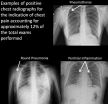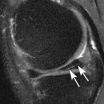(Press-News.org) Hamilton, ON (Dec. 3, 2014) - Scientists at McMaster University have discovered that human stem cells made from adult donor cells "remember" where they came from and that's what they prefer to become again.
This means the type of cell obtained from an individual patient to make pluripotent stem cells, determines what can be best done with them. For example, to repair the lung of a patient with lung disease, it is best to start off with a lung cell to make the therapeutic stem cells to treat the disease, or a breast cell for the regeneration of tissue for breast cancer patients.
Pluripotency is the ability stem cells have to turn into any one of the 226 cell types that make up the human body.The work challenges the previously accepted thought that any pluripotent human stem cell could be used to similarly to generate the same amount of mature tissue cells.
This finding, published today in the prestigious science journal Nature Communications, will be used to further drug development at McMaster, and potentially improve transplants using human stem cell sources.
The study was led by Mick Bhatia, director of the McMaster Stem Cell and Cancer Research Institute. He holds the Canada Research Chair in Human Stem Cell Biology and he is a professor in the Department of Biochemistry and Biomedical Sciences of the Michael G. DeGroote School of Medicine.
"It's like the stem cell we make wants to become a doctor like its grandpa or an artist like its great-grandma," said Bhatia.
"We've shown that human induced pluripotent stem cells, called iPSCs, have a memory that is engraved at the molecular/genetic level of the cell type used to make them, which increases their ability to differentiate to the parent tissue type after being put in various stem cell states.
"So, not all human iPSCs are made equal," Bhatia added. "Moving forward, this means that iPSC generation from a specific tissue requiring regeneration is a better approach for future cellular therapies. Besides being faster and more cost-efficient in the development of stem cell therapy treatments, this provides a new opportunity for use of iPSCs in disease modeling and personalized drug discovery that was not appreciated before."
Small quantities of tissue would need to be harvested from the patient; for example, a few millilitres of blood or a small skin punch biopsy. From there, the harvested cells can be put into various stem cell states where they make copies of themselves indefinitely. The trickier part has been to get them out of copy function model and into differentiation mode to produce the cells needed for researchers to test drug therapies with no harm to patients, said Bhatia.
The McMaster Stem Cell and Cancer Research Institute is the only Canadian university team continuing to work exclusively with the more fragile human stem cells rather than mouse stem cells for its research, and that has furthered the work to future clinical impact. By contrast, the iPSCs of mice, which are widely used in stem cell research, have no memory, the authors note.
"So, if you only studied the mouse alone, you'd never uncover this opportunity," said Bhatia.
In a previous discovery, Bhatia and his team discovered how to make human blood from adult human skin. This meant that patients needing blood would be able to have blood created from a patch of their own skin to provide transfusions.
With these new findings, "our starting block has changed," said Bhatia, adding that now researchers "can make better tailored human stem cells for therapies because we've got a more efficient way of making higher quality and quantity of cells. For example, our team has shown that the stem cells that come from blood in the first place make blood 10 times better."
INFORMATION:
The study was conducted over four years and was supported by the Canadian Institutes of Health Research and the Canadian Cancer Society Research Institute.
Editors:
Images may be found at: http://fhs.mcmaster.ca/media/reprogramming_cells/
For more information:
Veronica McGuire
Media Relations
Faculty of Health Sciences
McMaster University
vmcguir@mcmaster.ca
905-525-9140, ext. 22169
CAMBRIDGE, MA -- MIT biological engineers have created a new computer model that allows them to design the most complex three-dimensional DNA shapes ever produced, including rings, bowls, and geometric structures such as icosahedrons that resemble viral particles.
This design program could allow researchers to build DNA scaffolds to anchor arrays of proteins and light-sensitive molecules called chromophores that mimic the photosynthetic proteins found in plant cells, or to create new delivery vehicles for drugs or RNA therapies, says Mark Bathe, an associate professor ...
Vienna, Austria - 3 December 2014: The Mediterranean diet is linked to improved cardiovascular performance in patients with erectile dysfunction, according to research presented at EuroEcho-Imaging 2014 by Dr Athanasios Angelis from Greece. Patients with erectile dysfunction who had poor adherence to the Mediterranean diet had more vascular and cardiac damage.
EuroEcho-Imaging is the annual meeting of the European Association of Cardiovascular Imaging (EACVI), a branch of the European Society of Cardiology (ESC), and is held 3-6 December in Vienna, Austria.
Dr Angelis ...
CHICAGO - Researchers reported today on a procedure that can preserve fertility and potentially save the lives of women with a serious pregnancy complication called placenta accreta. Results of the new study presented at the annual meeting of the Radiological Society of North America (RSNA) showed that placement of balloons in the main artery of the mother's pelvis prior to a Caesarean section protects against hemorrhage and is safe for both mother and baby.
Placenta accreta, a condition in which the placenta abnormally implants in the uterus, can lead to additional complications, ...
CHICAGO - Researchers at Mayo Clinic found that some children are receiving chest X-rays that may be unnecessary and offer no clinical benefit to the patient, according to a study presented today at the annual meeting of the Radiological Society of North America (RSNA).
"Chest X-rays can be a valuable exam when ordered for the correct indications," said Ann Packard, M.D., radiologist at the Mayo Clinic in Rochester, Minn. "However, there are several indications where pediatric chest X-rays offer no benefit and likely should not be performed to decrease radiation dose ...
CHICAGO - A popular surgery to repair meniscal tears may increase the risk of osteoarthritis and cartilage loss in some patients, according to research presented today at the annual meeting of the Radiological Society of North America (RSNA). The findings show that the decision for surgery requires careful consideration in order to avoid accelerated disease onset, researchers said.
The new study focused on the meniscus, a wedge-shaped piece of cartilage in the knee that acts as a shock absorber between the femur, or thighbone, and tibia, or shinbone. The two menisci ...
New research from researchers at Queen Mary University of London (QMUL) looking at how goats express subtle positive emotions could lead to greater understanding of animal welfare. While there has been a great deal of research into negative emotions and stress in animals it is often hard for those who work with animals to know when they are in more subtle positive states.
Dr Alan McElligott and Dr Elodie Briefer, working from QMUL with goats at Buttercups Sanctuary for Goats, carried out the first research, published today (Wednesday) in the journal Animal Behaviour, ...
Pregnant women in Bangladesh with low levels of the most common form of vitamin E are nearly twice as likely to have a miscarriage than those with adequate levels of the vitamin in their blood, according to new research led by the Johns Hopkins Bloomberg School of Public Health.
The findings, published online last week in the American Journal of Clinical Nutrition, suggest that improving the diet of women in impoverished nations or encouraging intake of vitamin E through prenatal supplements could have a direct impact on fertility, though more research is needed.
"For ...
A new study from the UT Dallas Center for Vital Longevity shows that the brain activity prior to seeing an item is related to how well it is later remembered.
In the study published online in NeuroImage, the researchers showed that receiving information about a pair of items before seeing them may affect how well they are remembered.
Moreover, the researchers also found that the activity in different areas of the brain was unexpectedly related to how the information was remembered.
"If you're interested in memory, you want to know the factors that are associated ...
The deadly fungal disease known as white-nose syndrome has spread to bat colonies throughout eastern North America over the past seven years, causing bat populations to crash, with several species now at risk of extinction. The devastating impact of this disease is due in part to the seasonal dynamics of infection and transmission, according to a new study led by scientists at the University of California, Santa Cruz, and published December 3 in the Proceedings of the Royal Society B.
The researchers were surprised to discover that during the winter, when the bats are ...
It takes just 10 years for a single emission of carbon dioxide (CO2) to have its maximum warming effects on the Earth.
This is according to researchers at the Carnegie Institute for Science who have dispelled a common misconception that the main warming effects from a CO2 emission will not be felt for several decades.
The results, which have been published today, 3 December, in IOP Publishing's journal Environmental Research Letters, also confirm that warming can persist for more than a century and suggest that the benefits from emission reductions will be felt by those ...



